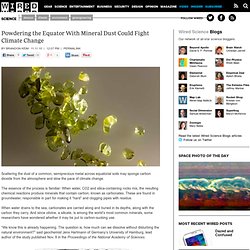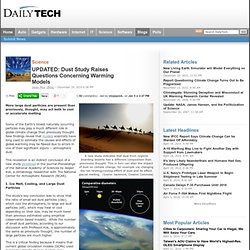

Stand in Solidarity - Stop the Tar Sands! English • Português • Español • Français • Deutsch **UPDATE: We joined forces with a powerful coalition of organizations, and unveiled our combined number of signatures (618,428!!)

At the White House on September 3** If you've already signed the petition please Post it on Facebook, Share It On Twitter, and send a solidarity message and photo to people protesting in DC. It's time to take a stand against the Keystone XL pipeline, a dangerous and destructive project that would pump over one million barrels of dirty "tar sands" oil from Canada to the USA every day.
The oil in the Keystone pipeline could poison drinking water, threaten the communities it runs through, and wreck the climate. But there's good news: the Keystone XL pipeline cannot be built without a "presidential permit" from the Obama Administration. Www.rense.com/How Informed Is The Public.pdf. State of Fear: Comments by Sallie Ballunis. Dr. Tim Ball's Climate Digest Series. As a practical matter of politics, nobody knows what Kyoto is or what it commits us to.

Michael Ignatieff , former leader, Liberal Party of Canada The Kyoto Protocol is a political solution to a non-existent problem without scientific justification. Dr. Timothy Ball, former climatology professor Isn't the only hope for the planet that the industrialized civilizations collapse? Maurice Strong, Senior Advisor to UN Secr-General Kofi Annan Consensus is the business of politics. Michael Crichton, author Until a continuous climate observing system is established, both climate models and observations will remain uncertain. Wielicki et al. We can no longer absolutely conclude whether globally the troposphere is cooling or warming relative to the surface.
Thorne et al, BAMS Oct 2005 We only understand 10 percent of the climate issue.
Powdering the Equator With Mineral Dust Could Fight Climate Change. Scattering the dust of a common, semiprecious metal across equatorial soils may sponge carbon dioxide from the atmosphere and slow the pace of climate change.

The essence of the process is familiar: When water, CO2 and silica-containing rocks mix, the resulting chemical reactions produce minerals that contain carbon, known as carbonates. These are found in groundwater, responsible in part for making it “hard” and clogging pipes with residue. When water drains to the sea, carbonates are carried along and buried in its depths, along with the carbon they carry. And since olivine, a silicate, is among the world’s most common minerals, some researchers have wondered whether it may be put to carbon-sucking use.
“We know this is already happening. Hartmann’s team calculated how much carbon might be absorbed by olivine mined from equatorial deposits, ground to a fine powder and scattered across the Amazon and Congo river basins. Dust Study Raises Questions Concerning Warming Models. A new study indicates that dust from regions boarding deserts has a different composition than previously thought.

This in turn can alter the impact of dust on climate change, for example via changing the net heating/cooling effect of dust and its effect glacial melting. (Source: bachmont, Creative Commons) The study finds that there's more large dust particles in the atmosphere than previously thought. This may mean that climate change models will need to be rerun and reanalyzed to take into account the complex effects of atmospheric dust. (Source: UCAR) More large dust particles are present than previously, thought, may act both to cool or accelerate melting Some of the Earth's tiniest naturally occurring particles may play a much different role in global climate change than previously thought.
Global Warming Mapped. The world is getting warmer. Whether the cause is human activity or natural variability, thermometer readings all around the world have risen steadily since the beginning of the Industrial Revolution. According to an ongoing temperature analysis conducted by scientists at NASA’s Goddard Institute for Space Studies (GISS), the average global temperature on Earth has increased by about 0.8°Celsius (1.4°Fahrenheit) since 1880. Two-thirds of the warming has occurred since 1975, at a rate of roughly 0.15-0.20°C per decade. The maps above show temperature anomalies, or changes, for 2000-2009 (top) and 1970-1979.
The world's most viewed site on global warming and climate change. The man who 'invented' Global Warming. Mr Tickle: altogether funnier, nicer and more useful than Sir Crispin Tickell I'm in Ireland this week and am not yet sure how close I'll be to the internet.

So to tide you over just in case here is a fascinating essay from Ishmael2009 (not his real name) on Sir Crispin Tickell is one of the chief architects of Man Made Global Warming's towering cathedral of half truths, exaggeration, hysteria and Neo-Malthusian lunacy. Climate Change and Global Warming: Human Survival and the Destruction of Nature. Reports, Research Studies, Climategate. Human Survival & the Destruction of Nature Climate Change and Global Warming "We are experiencing the greatest wave of extinctions since the disappearance of the dinosaurs. Extinction rates are rising by a factor of up to 1,000 above natural rates. Every hour, three species disappear.